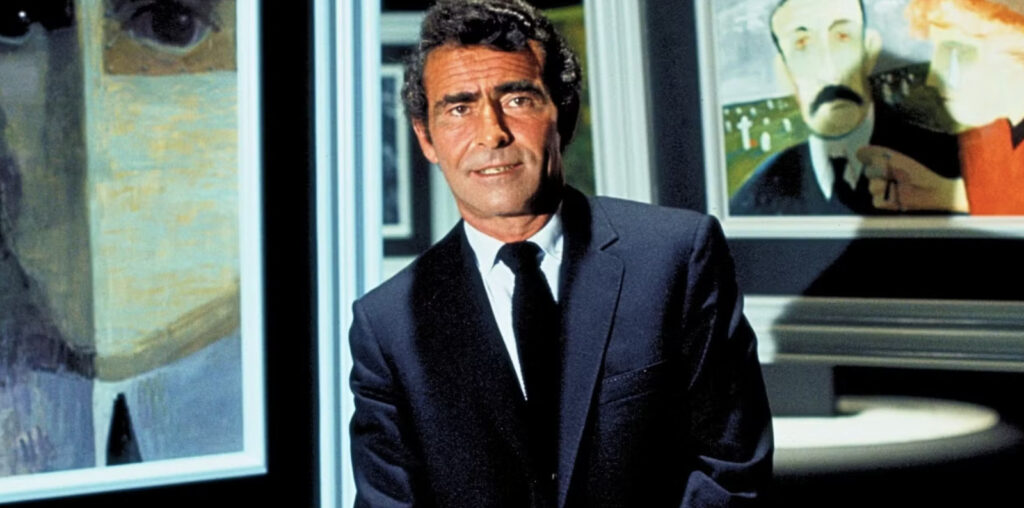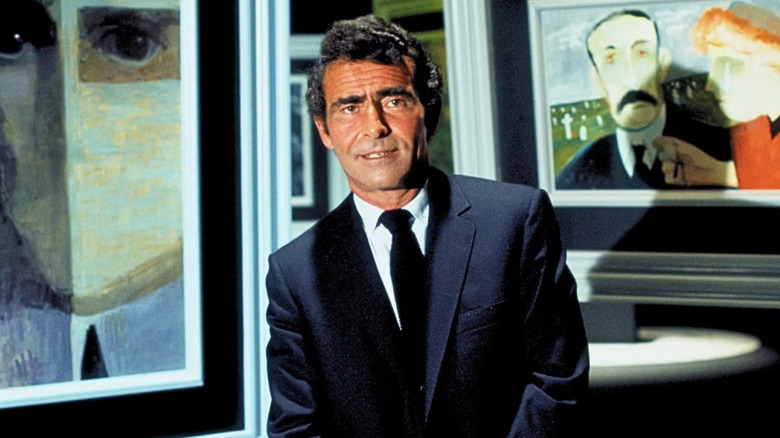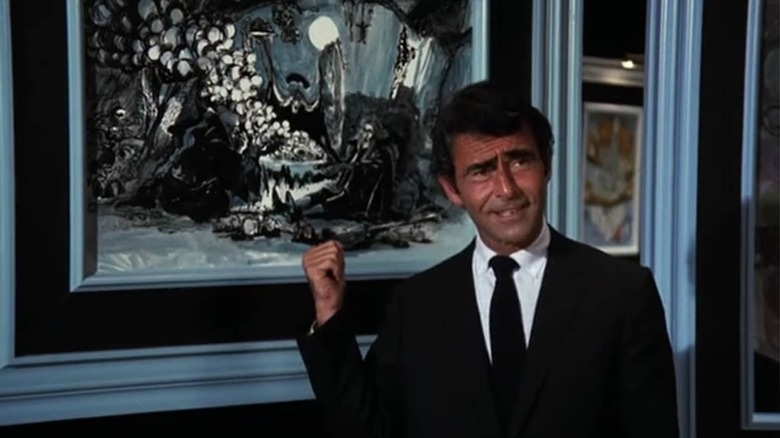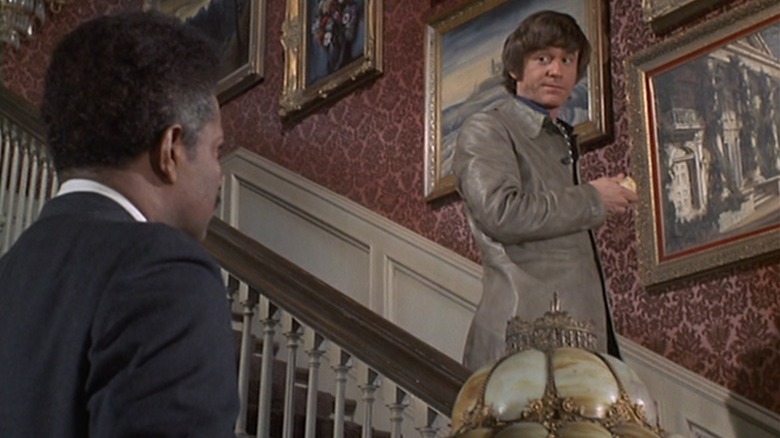We may receive a commission on purchases made from links.
To this day, Rod Serling’s sci-fi anthology series “The Twilight Zone” regularly tops lists of the best TV shows of all time. Serling, and a team of some of the best sci-fi authors of the 1950s and 1960s, conceived of 156 miniature morality stories, usually with a supernatural bent, and in so doing changed the very face of television. Sci-fi and horror were considered more commercially viable, inspiring a new slew of imitators and a shift in the public’s attention. Serling also introduced a unique form of storytelling efficiency with “The Twilight Zone,” proving that an entire, closed morality fable could be wrapped up in a mere 25 minutes (or 51 minutes in the show’s fourth season). Serling was also careful to explicitly state a moral in every episode, making “The Twilight Zone” a fantastic social commentary.
“The Twilight Zone” ran from 1959 to 1964, running 156 episodes over five seasons. The series entered syndication, and generations of kids were able to re-watch older episodes well into the 1990s. Certain TV stations around the United States even hosted annual “Twilight Zone” marathons on Thanksgiving Day, making Serling’s series an institution. To this day, young people can speak of a creature on the wing of a plane or the fact that “To Serve Man” is a cookbook.
After “The Twilight Zone,” Serling stumbled to make another hit. He created a short-lived Western called “The Loner” in 1965, but it only lasted one season. In 1969, Serling wrote an international riff on “A Christmas Carol” called “A Carol for Another Christmas” starring Peter Sellers. That same year, Serling hosted the game show “Liar’s Club,” which he left after 21 episodes.
Serling’s grand return to anthology horror is well-remembered by fans but experienced a notoriously troubled production. Many fans of classic TV will be able to tell you all about “Night Gallery,” which debuted in 1969.
‘Night Gallery’ was the more horror-forward version of ‘The Twilight Zone’
“Night Gallery” was an anthology series with a curious bookend. At the beginning of every episode, Serling would appear in a vast, wall-less art gallery stocked with eerie, macabre paintings. Serling would wander around the museum, seemingly after it had closed, guiding the viewer toward various pieces on display. He would then say that each painting was inspired by the macabre tale he was about to spin. The paintings were provided by artists Thomas J. Wright and Jerry Gebr.
“Night Gallery” might be considered a spiritual sequel to “The Twilight Zone,” boasting a similar tone and telling equally twisty stories. “Night Gallery” stood apart because of its focus on supernatural evil, and for its glorious color photography. Like “The Twilight Zone,” “Night Gallery” culled sci-fi magazines and literary anthologies to find stories to adapt, and the series boasted TV versions of stories by Richard Matheson, H.P. Lovecraft (including “Cool Air” and “Pickman’s Model”), and many others. NBC wanted a deliberately gruesome series, and Serling was happy to oblige, so long as he could continue with his tradition of writing morals and social commentary into his episodes.
Also like “The Twilight Zone,” “Night Gallery” boasted an impressive raft of talent. The series provided a few early directing gigs for a young Steven Spielberg, and actor John Astin helmed a story, as did Leonard Nimoy. Jeannot Swarc directed many episodes, as did future “Saturday Night Fever” director John Badham. Serling penned the bulk of the “Night Gallery” episodes. Guest stars included Vincent Price, Burgess Meredith, Stuart Whitman, Cameron Mitchell, Leslie Nielsen, John Saxon, Joan Crawford (in her final acting role), Orson Welles, Phyllis Diller, and dozens of others.
Rod Serling often butted heads with his producer, Jack Laird
“Night Gallery” was initially presented as a Wheel Show, that is: one of multiple shows that would rotate through the same weekly timeslot. The show shared its space with “McCloud,” “The Psychiatrist,” and “San Francisco International Airport,” with all four shows bundled as “Four in One.” Because of this, the first season of “Night Gallery” only featured six episodes.
Starting in its second season, however, trouble started. The show’s producer, Jack Laird, rejected a lot of Serling’s scripts and started insisting on inserting his own comedic interstitials in between the macabre tales. Serling loathed the so-called “blackout sketches,” saying in the biography “Rod Serling: His Life, Work, and Imagination,” that “I thought they distorted the thread of what we were trying to do on ‘Night Gallery.’ I don’t think one can show Edgar Allan Poe and then come back with Flip Wilson for 34 seconds. I just don’t think they fit.” Flip Wilson, of course, was a famous comedian popular in the early 1970s.
During the show’s second season, Serling quit as executive producer to focus on writing full-time. This, sadly, gave him less creative control, and “Night Gallery” started to deteriorate in quality. By the third season, the series was reduced to a 30-minute format, and Laird began insisting on fewer morality tales as they appeared on “The Twilight Zone.” There was also a mandate to adapt fewer European short stories and more American ones. The series was canceled after its third season, having run for 43 episodes.
“Night Gallery” wasn’t forgotten, however. Indeed, it was popular enough to be parodied in “The Simpsons” fourth Halloween Special. Spielberg also didn’t forget his roots and reused the title as “Night Ghoulery” for the “Tiny Toon Adventures” Halloween Special he produced. “Night Gallery” doesn’t have the same cultural traction as “The Twilight Zone,” but a search through the episodes will find a few stories that are just as good, if not better. The series can be purchased on Prime Video.




